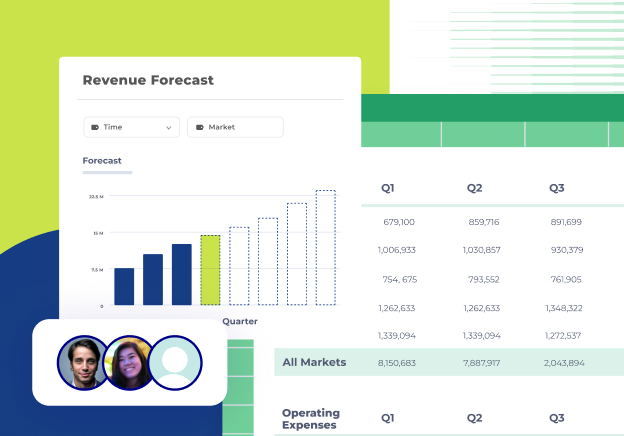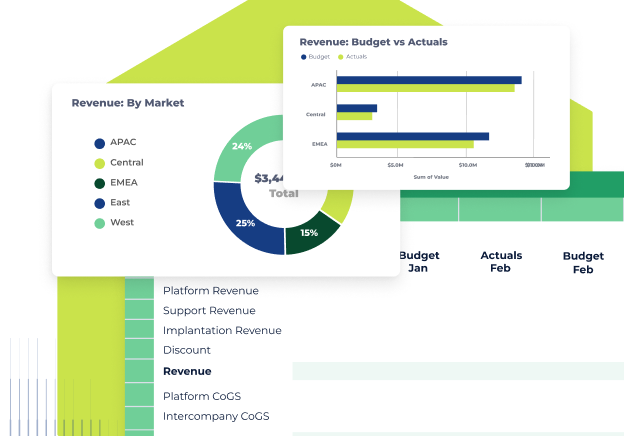Key takeaways
- Gross Revenue Retention (GRR) measures the revenue a business keeps over a time period. It accounts for contractions and losses, but not expansions.
- Net Revenue Retention (NRR) measures the revenue from existing customers over a time period. It includes expansions as well as contractions and losses.
- Creating a positive customer success experience is a proven way to maximize both forms of revenue retention.
What is revenue retention?
Revenue retention measures how much revenue a business keeps from the same customer base, compared over a time period. You can track it by month, quarter, year, week, or day.
Revenue retention only refers to existing customers. New customers are great, but revenue retention considers only current customers.
Benefits of tracking revenue retention
Acquiring a new customer can be 5 to 25 times more expensive than retaining an existing one. It's not a stretch to say a similar trend holds for revenue.
It is, perhaps obviously, less expensive (in terms of time, resources, and finances) to retain the revenue you've already generated.
Revenue retention is a good measure of sustainability and profitability. A business growing quickly but churning most of its customers reflects deeper issues. In contrast, a business renewing and growing its customer base has a greater potential lifetime value for its customers and is more profitable in the long run.
Reliable revenue retention stabilizes the runway. This is more important for small companies, where churn can vary.
Knowing your revenue retention is essential for scenario planning: Knowing the story of the past is essential to accurately predict the future.
Now, you might be wondering: why not just track customer retention?
Why not just track customer retention?
(Note that many companies refer to customer retention as "logo retention")
Not all customers are created equal. One customer can constitute 30% of a company’s revenue and another just 0.05%. Losing any customer hurts, but one hurts more if it reflects a greater share of revenue.
Tracking revenue retention alongside customer retention can help you get the full picture.
Two primary ways to track revenue retention are gross revenue retention (GRR) and net revenue retention (NRR). To fully grasp these concepts, let's delve into the comparison of 'Net Retention vs Gross Retention' and what each signifies for a business.

What is gross revenue retention (GRR)?
Understanding the GRR meaning is crucial as it refers to a business's ability to retain revenue.
It’s strictly the percentage of revenue they've retained from the start of the period.
In other words: how successful is this business in retaining its existing customers (at their existing price points/contract values)?
Here's how to calculate gross revenue retention:
GRR = (MRR - Churn - Contractions) / MRR
Where MRR(Start) is monthly recurring revenue at the start of the month, churn refers to the dollar amount lost to customers who are no longer customers, and contractions refers to the dollar amount lost to customers who downgrade to a less expensive plan.
How to calculate gross revenue retention: an example
Assume the following:
- Begin the month with $100,000 in monthly recurring revenue (MRR)
- Gain $10,000 in new sales
- Sign $10,000 in upgrades from existing customers (expansions)
- Lose $5,000 in customer churn
- Lose $5,000 due to downgrades (contractions)
We’ve earned $10,000 this month in upgrades. We’ve also lost $10,000 in churn. So our overall revenue retention equals out, right? Money in ($10k) equals money out ($5k + $5k = $10k).
Not so fast.
Fortunately, there's more than one way to cook an egg. One of those is gross revenue retention (GRR).
Let’s calculate it:
GRR = ($100,000 - $5,000 - $5,000/$100,000)
GRR = $90,000/$100,000
GRR = 0.9
GRR = 90%
So our Gross Revenue Retention is actually 90%, since we lost 10% of our revenue to churn.
Additionally, we made $10k in new sales. But since those are new acquisitions, we ignore them.
What does this mean, though?
What does gross revenue retention tell me?
GRR is a stability indicator: it signals how reliable the business's income is and how pleased current customers are. (If they were unhappy, they'd churn.)
What is a good GRR?
The closer GRR is to 100%, the better.
That said, this depends on the customer size. Higher churn (and therefore lower retention numbers) is more expected from SMBs.
Ultimately, a good GRR not only underscores a company's stability in revenue retention but also highlights its success in delivering consistent value to its existing customers.
Why is gross revenue retention important to track?
Gross revenue retention tells you how stable (and predictable) the business's revenue is without assuming growth from upsells or upgrades.
If gross revenue retention is low, it could signal a few problems with the business's health:
- Not solving the right problem. People don't stick around because you’re not solving a big enough problem for them to continue to pay for the solution.
- The experience is frustrating. Bad customer experiences with the product or services can lead to churn.
- Customers don't use the product enough. If people only log in once a month, you’re not building trust or loyalty with them.
But our gross revenue retention doesn’t account for new customers or expansions. It only looks at what we started with and how much we’ve lost.

What is net revenue retention (NRR)?
Net revenue retention (also known as “Net Dollar Retention” or NDR) is the total (net) change in recurring revenue. It tracks a business's ability to retain and acquire revenue from a group of customers.
Most SaaS customer success teams also use NRR to measure their own performance.
The following revenue-impacting things can happen:
- A customer leaves ("churns")
- A customer downgrades to a lower-paying plan
- A customer buys a new product (from you)
- A customer upgrades to a higher-paying plan
Fortunately, the net revenue retention formula takes all of this into account:
NRR = (MRR(Start) + Expansions - Churn - Contractions) / MRR(Start)
MRR(Start) is monthly recurring revenue at the start of the month, expansions are the new money existing customers have spent with the business, churn refers to the dollar amount lost to customers who are no longer customers, and contractions refers to the dollar amount lost to customers who downgrade to a less expensive plan.
How to calculate net revenue retention: an example
Let’s revisit our earlier example:
- MRR = $100,000
- New Sales = +$10,000
- Expansions = +$10,000
- Churn = -$5,000
- Contractions = -$5,000
Even though net revenue retention is a growth metric, it's still a retention metric. Don't make the mistake of including new sales.
Plugged into the formula, it looks like this:
NRR = ($100,000 + $10,000 - $5,000 - $5,000) / $100,000
NRR = $100,000/$100,000
NRR = 1
NRR = 100%
Since money in equals money out, our net revenue retention is 100%. We started the month with a $100,000 MRR and we exited the month with a $100,000 MRR.
What does net revenue retention tell me?
NRR (also called NDR) can help business owners and stakeholders gauge how the business is expanding. It's a growth indicator that signals how well cross-sell and upsell strategies work.
- NRR > 100% indicates growth.
- NRR = 100% means the business is static.
- NRR < 100% indicates decline.
According to advisor Dave Kellogg, a good median NRR for private companies is 104%.
It's worth repeating that NRR only looks at existing customers. Combining it with other metrics is best to get a full picture of what's happening in the business.
Why is net revenue retention important to track?
High net revenue retention means customers are climbing the value ladder. You're offering the right things they need as they grow.
This means: keep doing what you're doing.
If net revenue retention is low, it could signal a couple of things about the business's health:
- Not offering the right upgrades. People get a basic plan and find it fits their needs perfectly, so there's no need to upgrade.
- The customer success experience is frustrating. It's possible that people could upgrade, but the experience of working with the product or company is more trouble than it's worth. So they look somewhere else.
- Need to build brand loyalty. Also called customer loyalty, this is an abstract measure of how much people will choose your brand over others. When we're loyal, we don't switch brands.
A consistently low net revenue retention rate should sound alarm bells.
What don’t gross revenue retention and net revenue retention tell us?
Gross revenue retention is a strict measure of the value we’ve retained from our existing customers, but it doesn’t account for growth.
Net revenue retention is a more complete picture of the revenue we've retained from our existing customers, but it hides what’s really going on in the business because it can obscure and cloak a churn problem.
But the biggest thing these metrics don't tell us is what's happening with our customers. Because these are revenue metrics, it's best to support them with customer churn metrics to get the full picture of what's happening in the business.

Measuring and when to use GRR vs. NRR
The best insights come from cross-referencing GRR and NRR.
| |
High NRR
|
Low NRR
|
|
High GRR
|
✅ Keep up the great work!
|
Churn is low, but growth is poor.
|
|
Low GRR
|
(Unlikely to happen. Check your calculations.)
|
🚨 There are larger underlying issue(s)
|
High GRR and High NRR: Everything is good. It's time to focus on acquiring new customers now.
High GRR but Low NRR: This business should consider the upgrades they offer. They're doing a great job at keeping their customers, but they need to get good at selling to them again.
Low NRR and Low GRR: Trouble. This business needs to radically invest in customer support and take a hard look at the problem they solve.
How to improve GRR and NRR
At the end of the day, people are the ones who make the decision to churn or not.
So while we might calculate revenue retention metrics separately from customer churn, in practical terms, there's no separating them.
But there are a few nuances.
How to improve gross revenue retention
Since gross revenue retention focuses on avoiding churn and contractions, the best strategies to improve it focus on keeping your customers involved and happy.
How to improve net revenue retention
Much of what you do to improve GRR will indirectly improve NRR because it reduces churn and contractions. If you want to double down on improving your NRR, focus on expansions. Or course, following a customer retention strategy helps, too.
- Provide better customer service: An American Express report says that 66% of customers are willing to spend more with a company prioritizing customer success.
- Refine the value ladder: Net Revenue Retention increases as customers move to the next tier in their subscriptions. This means the next pricing bracket should meaningfully add value.
- Adopt a customer expansion strategy: This will help increase the customer lifetime value (LTV) and net revenue retention.
Dig deeper with cohort analysis
A cohort is a subsection of customers who share a characteristic (they’re SMBs, they’re located in Asia, or they’ve been customers for fewer than 3 months).
Cohort analysis is the analysis of a specific cohort's behaviors.
...How does this help address problems with GRR and NRR?
It might be that a single cohort is responsible for 80% of a business's churn.
So to improve GRR and NRR, that business needs to work at retaining customers or logos in that cohort.
For example, if you have a lot of customers in a specific time zone who are churning because you don't have any customer support representatives covering that area, it makes sense to hire a customer service representative (or a few!) to cover that time zone.
Common mistakes in revenue retention strategies
As companies strive to improve their revenue retention, they frequently run into certain common errors. Awareness of these errors is key to crafting better retention strategies:
Neglecting customer feedback: One of the most critical errors is ignoring what customers are saying. Feedback is a goldmine of insights for improving products or services and thus retaining more revenue.
Overlooking small customer segments: Every customer counts. Small or seemingly less significant customer segments can collectively have a substantial impact on your revenue. Tailoring strategies to suit all customer sizes is crucial.
Inflexibility to market changes: The market is ever-evolving, and so are customer needs. A failure to adapt to these changes can result in outdated offerings and a decline in customer retention.
Industry-specific strategies for improving GRR and NRR
Different industries require different approaches to revenue retention. Here, we explore how tailoring strategies for Gross Revenue Retention (GRR) and Net Revenue Retention (NRR) can lead to more successful outcomes across diverse business landscapes.
Manufacturing Industry: Customization and After-Sale Services
Manufacturing companies can improve GRR by offering customized solutions and robust after-sale services. This approach helps retain clients and maintain steady revenue, especially in markets prone to fluctuations.
Real Estate: Focusing on Long-Term Tenant Relationships for GRR
In real estate, especially commercial leasing, building long-term tenant relationships can enhance GRR. Implementing flexible leasing terms and providing attentive property management services are key strategies.
Healthcare Industry: Patient Engagement and Service Quality
Healthcare providers can enhance GRR by emphasizing patient engagement and high-quality care services. This approach builds patient trust and loyalty, leading to reduced patient turnover and more stable revenue streams.
SaaS industry: Flexible Subscription Models
Implementing flexible subscription options tailored to different user needs can aid in both GRR and NRR. Offering various pricing tiers and customizable packages can attract a broader client base and encourage existing clients to upgrade.
Retail: Membership Programs to Boost NRR
Retailers can improve NRR through effective membership and loyalty programs. These programs incentivize repeat purchases and create upsell opportunities, leading to increased revenue from existing customers.
The role of leadership in driving GRR and NRR goals
Effective leadership plays a pivotal role in enhancing Gross Revenue Retention (GRR) and Net Revenue Retention (NRR), involving:
Setting and communicating goals: Leaders must clearly define and communicate GRR and NRR objectives, ensuring all team members are aware of their roles in achieving these targets.
Fostering collaboration: It's crucial to cultivate a collaborative environment where departments like sales, customer service, and finance work together to address factors affecting revenue retention.
Encouraging innovation and creativity: A key leadership role is to encourage innovative thinking within teams, allowing for creative solutions to enhance revenue retention strategies.
Recognition and reward: Effective leaders should recognize and reward team efforts and successes in improving GRR and NRR, fostering a culture of achievement and motivation.
Conclusion: all about revenue retention
Now you should have a clearer understanding of the differences between GRR and NRR, as well as the unique roles they play in assessing and enhancing customer value and loyalty.
Now, let's introduce you to Cube.
Cube simplifies tracking your monthly or annual revenue through its innovative, cloud-based FP&A tools seamlessly integrated with Excel.
To see how Cube can streamline and enhance your financial operations, click the image below and register for a free demo.



.png)









.png)

%20(1).png)


.png)
.png)
.png)